It’s time for cool-weather gardening! There’s plenty happening in our year-round Florida garden. Fruits are blossoming, veggies growing, and herbs are rejoicing to be out from under the sweltering summer heat and humidity.
Hi there, and welcome to my monthly series about how I grow a year-round garden in a sub-tropical climate. Each month I’ll share with you my observations and notes from my garden journal. I’ll also include gardening tips, monthly harvests, and my favorite resources related to the season.
Here is my summary of what happened in November:
Journal Entries
Week 1
The cabbage seeds sprouted, producing 14 healthy plants. I had bought the seeds over a year ago, and I still got about an 80% germination rate. Cabbage seeds, with proper storage, are commonly known to last from three to five years. That’s a good thing, because I have about ½ teaspoon left in the seed packet, which is easily 50 – 80 seeds still in there. They will keep me well-supplied for another two years.
The lettuce seeds I had sown in the raised bed with the onions also came up. They’re a bit of a mess because the neighborhood squirrels have been burying acorns in the raised bed, tossing dirt all over the place. The squirrels have been digging into many of my potted plants lately. There hasn’t been much damage, just a mess of holes and dirt.
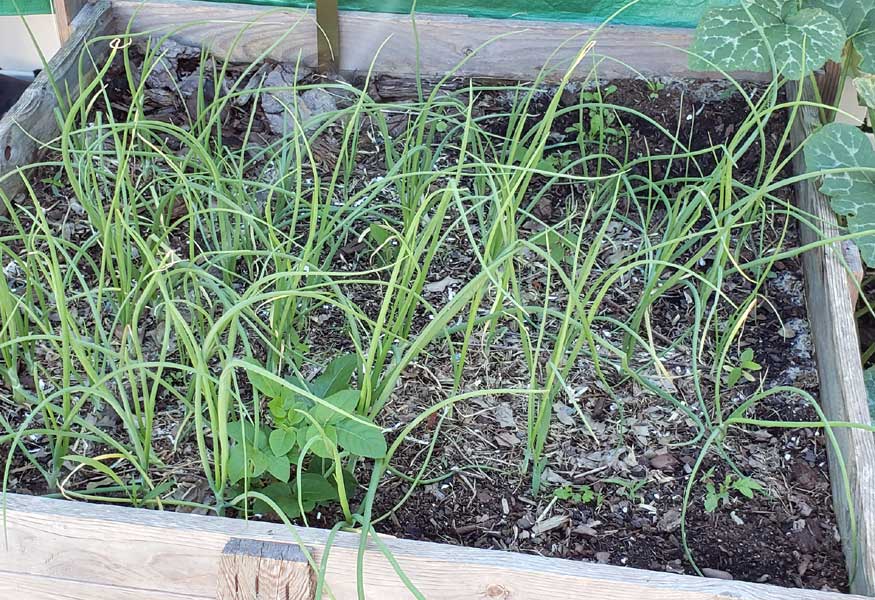
Two more Seminole pumpkins were ripe, so I cut them off the vine, and left them to cure on the counter in the kitchen for a couple of weeks before placing them in the pantry. Each weighed about 2 ½ pounds.
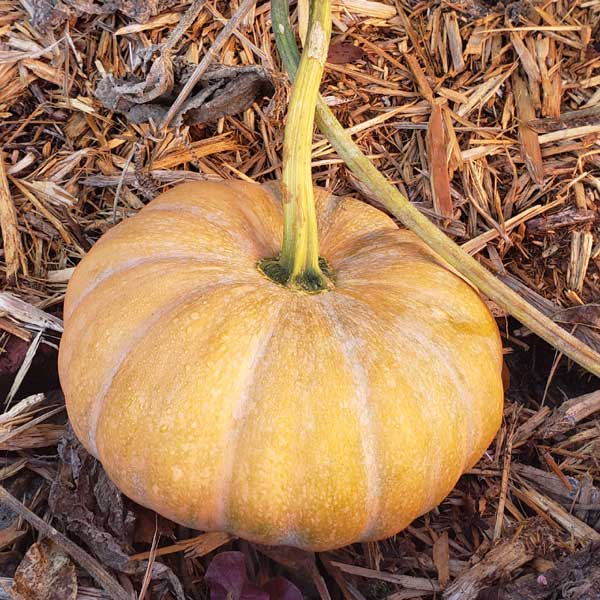
The passionfruit have started blossoming profusely! The vines and blossoms look strong and healthy. Perhaps now I’ll get some fruit? Having never grown these before, it’s been a fun experiment for me.
Week 2
On November 7th, my very first cranberry hibiscus blossom opened. These plants create a gorgeous flower. I wrote a post about them and other hibiscus “cousins” that you can read here: “Cranberry Hibiscus, Sorrel, or Roselle?”
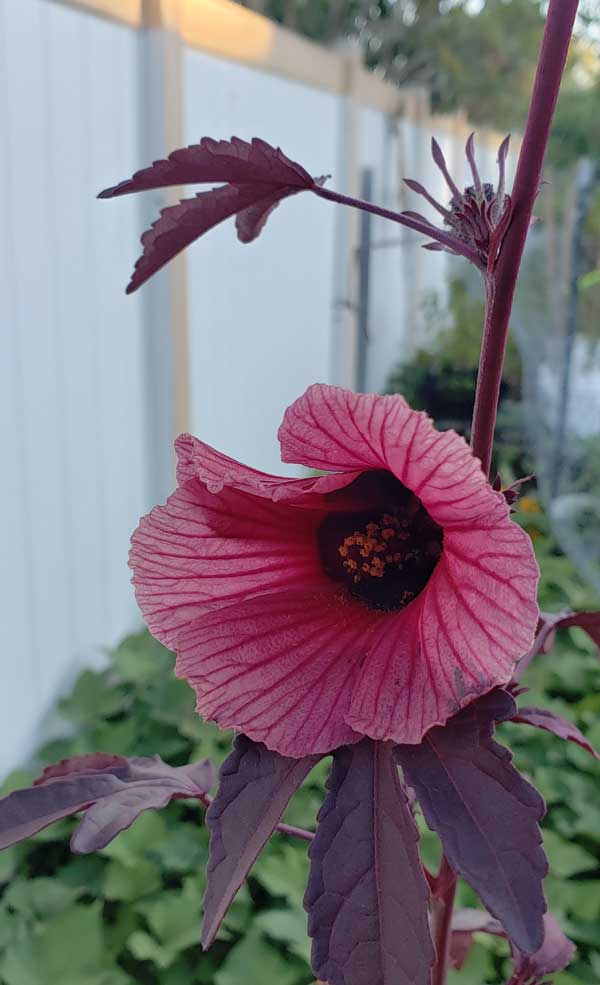
This week, I also found my first passionfruit fruits. The glossy green globes were peeking out from the expiring blossoms. I counted over a dozen of them. There were many more blossoms coming on too, so I’m hoping for a nice harvest sometime this winter.

At the end of the week, I spent some time with my potted plants. I potted up the cabbage seedlings into red cups using bagged garden potting soil. I also repotted two Christmas cacti that were getting rotted roots. It seems the potting soil I had been using did not drain well, so I repotted them with a succulent soil mix. I also used some of that mixture to pot up four more dragon fruits. They sure grow fast!
The 5 loquat trees that I started from seed were about 8 inches tall and I repotted them too.
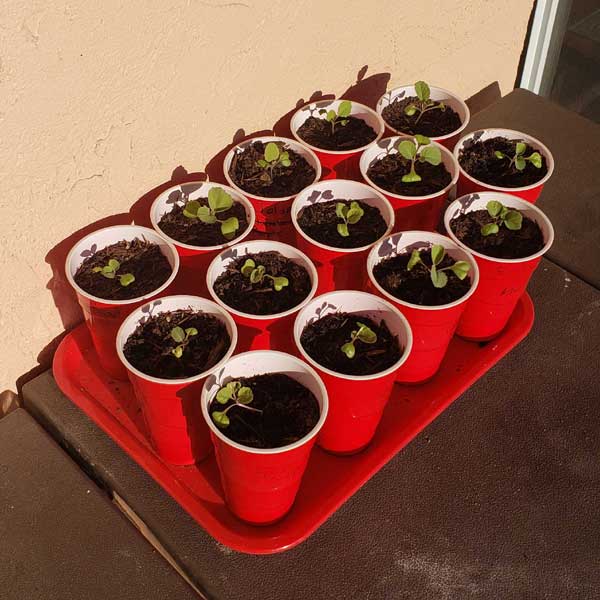
Week 3
The weather has been cooler and the low temps sometimes dropping into the 50’s overnight. I’ve been quite hands-off with the garden this season, just letting it do its own thing. Everything is growing slower (except maybe the passionfruit!) with the colder weather and shorter daylight hours. There’s almost no pest or disease pressure, other than leaf miners in my citrus and cactus rust on the dragon fruits.
Week 4
I found a couple of surprises the last week of November. First, while I was spraying the citrus with Neem Oil to ward off the leaf miners, I found my very first lemon tree blossom!
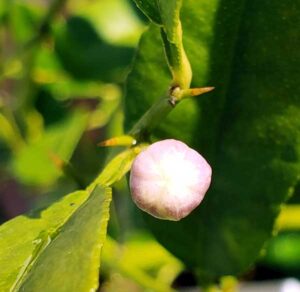
Second, I was taking a morning garden stroll before going to work and I found a Seminole pumpkin growing under a palm!
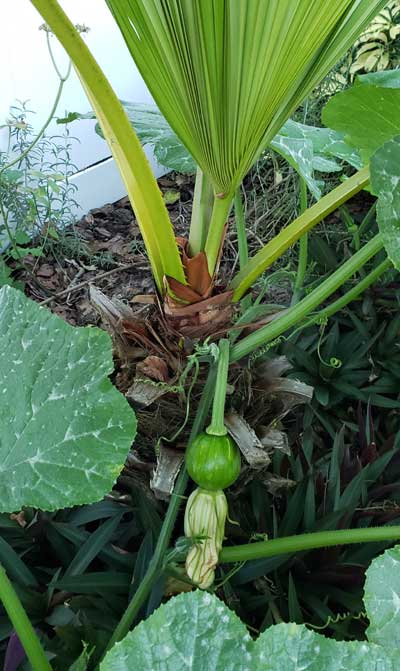
This was also the week of Thanksgiving here in the United States. It’s always a time of reflection of what you’re thankful for. This year, some of the things I was thankful for included all that I’ve learned about growing plants here in zone 9b. I have enjoyed eating and growing new-to-me foods as well as learning the best time to grow some of my old favorites. I’m thankful for all the people who have shared their knowledge with me either via the Internet, or in-person.
One of our newest Thanksgiving traditions is digging sweet potatoes the day after Thanksgiving. This year my husband and I dug up about 80% of our sweet potatoes. The other 20% are the Murasaki sweet potatoes which we will dig later in December. Here is more information about them from the Burpee seed company.
Our total harvest weight was 41.4 pounds of tubers. We are curing them in the house to keep them warm. Joe Gardener has an excellent tutorial for harvesting and curing sweet potatoes. Check out his YouTube video: How to Harvest, Cure, and Store Sweet Potatoes.
Once my sweet potatoes are cured, I’ll store them in the pantry where they’ll be ready to cook for our family Christmas dinner and all winter-long.
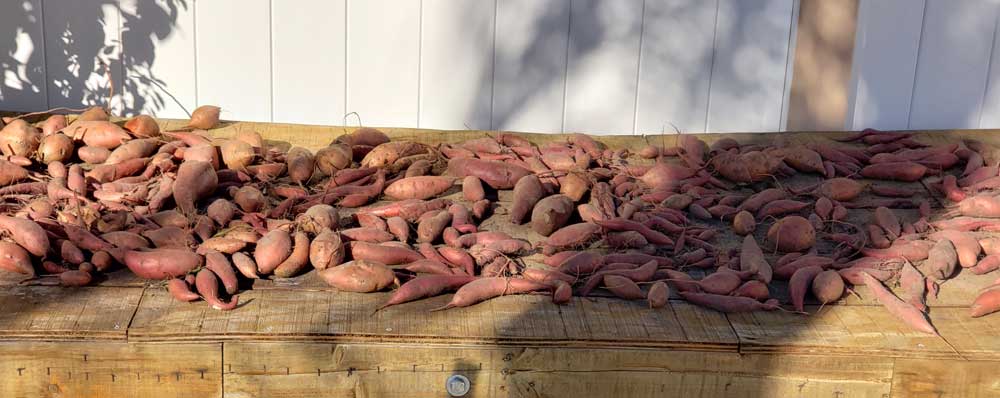
Harvest Summary
This month I was fortunate enough to harvest the following foods from my garden:
Food Harvested:
- Roselle calyxes for tea
- 4 Seminole pumpkins
- Jalapenos and green peppers
- Sweet potatoes
- Egyptian spinach
- Lemon balm and mint to dry for teas
Seeds Harvested:
- Roselle
- Seminole pumpkin (from a pumpkin picked in July)

Gardening Resources
- Florida Gardening Guide from the UF|IFAS
- Joe Gardener’s YouTube guide to harvesting sweet potatoes
- Christmas cactus care
Final Thoughts
After two full years of gardening in Zone 9b, I’ve developed a feel for the rhythm of the seasons here in the sub-tropics.. My garden journal has been a huge help with planning the correct timing for starting seeds, managing pests and diseases, and when to expect harvests.
I hope my Garden Journal has helped you as well. Next month I’ll update you on my first passionfruit harvest, new Seminole pumpkins growing, onion harvest, herb seed-saving, and my garden plans for 2022.
Happy gardening!
Alisa
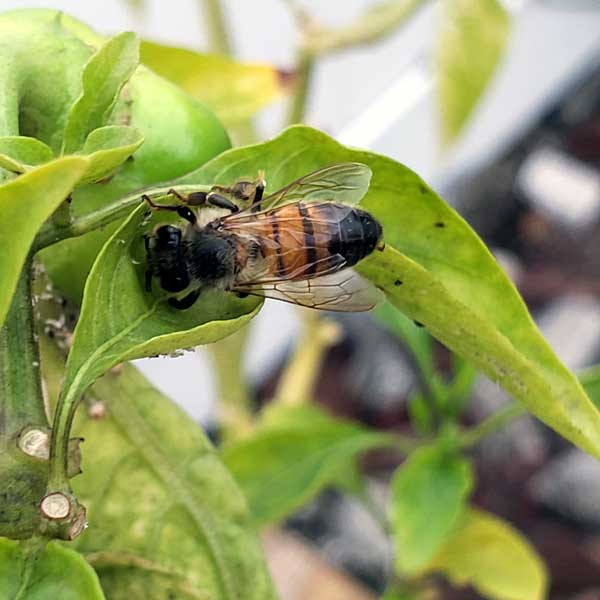
Sleepy bee on a pepper plant. 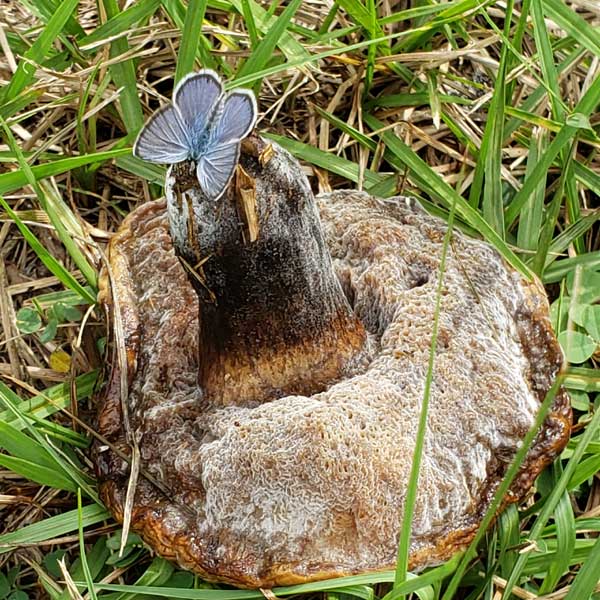
Cassius Blue butterfly on an upturned wild mushroom. 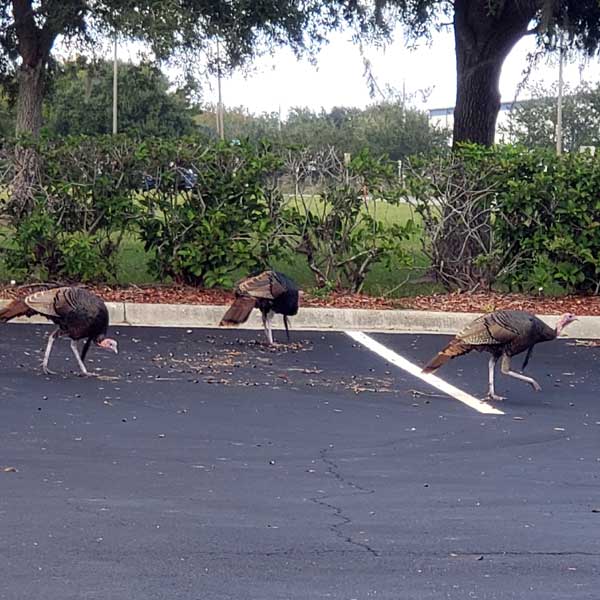
Wild turkeys behind my place of employment. 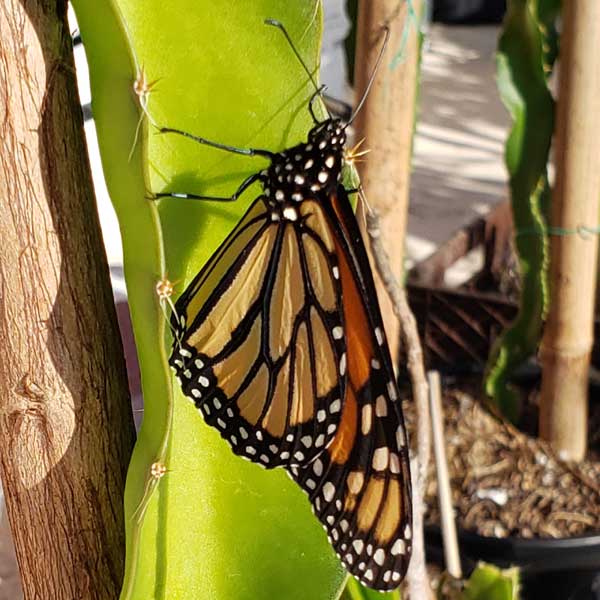
Monarch butterfly resting on a dragon fruit branch